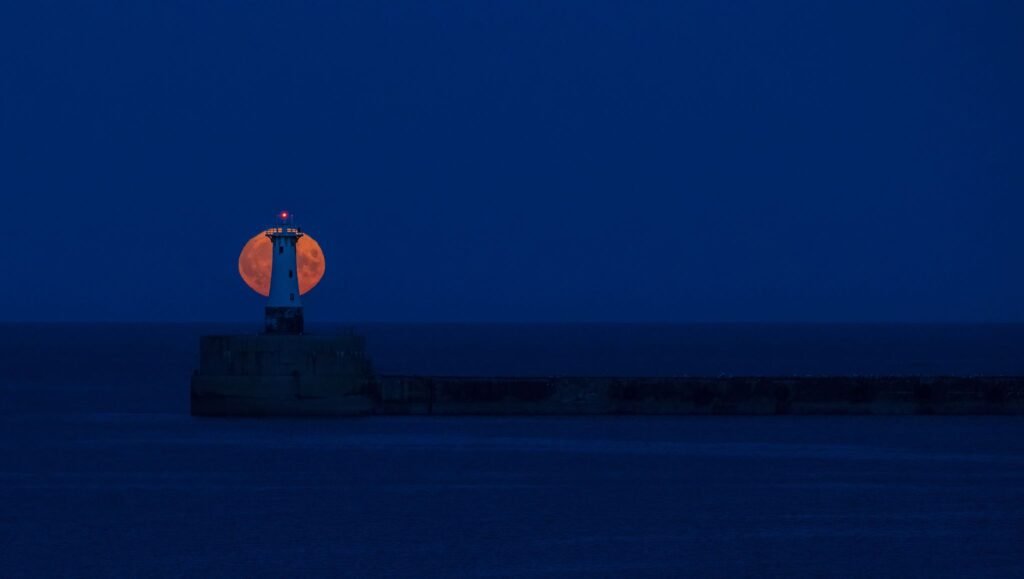Amazing Full Moon Calendar 2025-2026
When to See Next Full Moon? Calendar tells you dates, times, and unique names given to each.
Full moon meaning
Astrologically speaking, a full moon is considered a culmination or a climax—a time in which to get back on the proper path.
Those who are new to the study often times believe that they should be manifesting during a full moon.
However, a new moon presents the best opportunities for manifestation.
In terms of astronomy, a full moon is opposite the sun in its orbit around Earth.
Historically speaking, Native Americans and Europeans gave each monthly lunation a moniker to coincide with the time of year
>>>Supermoon Gallery (1)<<<
Full Moon Calendar 2025
| Full Moon Date | Native American Name |
| 13 January (10.27pm) | Wolf Moon |
| 12 February (1.53pm) | Snow Moon |
| 14 March (6.55am) | Worm Moon |
| 13 April (1.22am) | Pink Moon |
| 12 May (5.56pm) | Flower Moon |
| 11 June (8.44am) | Strawberry Moon |
| 10 July (9.37pm) | Buck Moon |
| 9 August (8.55am) | Sturgeon Moon |
| 7 September (7.09pm) | Harvest Moon (Corn Moon) |
| 7 October (4.48am) | Hunter’s Moon |
| 5 November (1.19pm) | Beaver Moon |
| 4 December (11.14pm) | Cold Moon |
>>>Supermoon Gallery (2)<<<
Full Moon Calendar 2026
| Full Moon Date | Native American Name | Time of Full Moon |
| January 3 | Wolf Moon | 10:04 am |
| February 1 | Snow Moon | 10:10 pm |
| March 3 | Worm Moon | 11:39 am |
| April 2 | Pink Moon | 03:13 am |
| May 1 | Flower Moon | 06:24 pm |
| May 31 | Blue Moon | 09:46 am |
| June 30 | Strawberry Moon | 12:58 am |
| July 29 | Buck Moon | 03:37 pm |
| August 28 | Sturgeon Moon | 05:19 am |
| September 26 | Corn Moon | 05:50 pm |
| October 26 | Hunter’s Moon | 04:13 am |
| November 24 | Beaver Moon | 02:55 pm |
| December 24 | Cold Moon | 01:29 am |
The Moon is one of nature’s wonders, but to photograph it successfully, you first have to understand it.
Although astrophotographers specializing in the Moon usually photograph it through a powerful telescope, a telephoto lens of almost any focal length is good enough to get a good Moon shot.
Making the Moon the sole focus of a shot, however, is only one way to approach lunar photography; another is for it to enhance a landscape photo, where it can provide a powerful addition to a wide-angle image.
The Moon is a moving target; the combination of Moon’s 2,288 miles-per-hour orbit and Earth’s 1,000 miles-per-hour rotation makes our satellite a fast-moving target.
However, it’s usually bright enough for a relatively fast shutter speed to yield good results.
How to focus on the Moon
Although you can autofocus on the Moon as it rises, or as it becomes visible just before sunset, it’s a good idea to focus manually.
With your lens set to manual focus, set the focusing ring to infinity.
It takes some practice, since most cameras can focus beyond infinity, and finding the exact point that works for your lens takes trial and error.
Take some test shots and zoom in on the result on your camera’s LCD screen to see which one works best.
Don’t skip this step; only once you’ve done it correctly will your Moon photos be reliably sharp.
How to expose for the Moon
It’s a common mistake to overexpose the moon, but it’s actually much brighter than you think. However, if you want to photograph the foreground and not just the moon by itself, you will need to make sure your exposure works for both or use bracketing to take multiple shots with different exposures.
To get a great Moon shot and little else, set your camera to ISO 100 or ISO 200 and the aperture to between f/5.6 and f/11, and adjust your shutter speed to between 1/125sec and 1/250sec.
The exact settings will vary depending on your camera and the brightness of the Moon, which depends on its exact phase, but these base settings will get you started.
How to capture a moonrise or moonset
There are two exceptions to the advice to avoid photographing the Full Moon.
The first is when there’s a total lunar eclipse, and the second is when a Full Moon as it rises or sets, as it’s a great alternative to a sunset.
The sight of a Full Moon peeking above the horizon and turning from deep orange to pale yellow to bright white during twilight is a spectacular sight.
It also presents an opportunity to get the Moon in the context of a beautiful landscape.
The colourful spectacle lasts mere minutes and is easy to miss, but, like everything else in the night sky, a rising Full Moon is predictable down to the second.
Simply find out exactly on what day the next Full Moon is going to be where you are, and exactly what time sunset is on that date, then look to the east for the moonrise. Start-off with your camera set to ISO 100, f10 and 1/125.

Table of Contents

Plan Ahead with Peterhead.Live on

